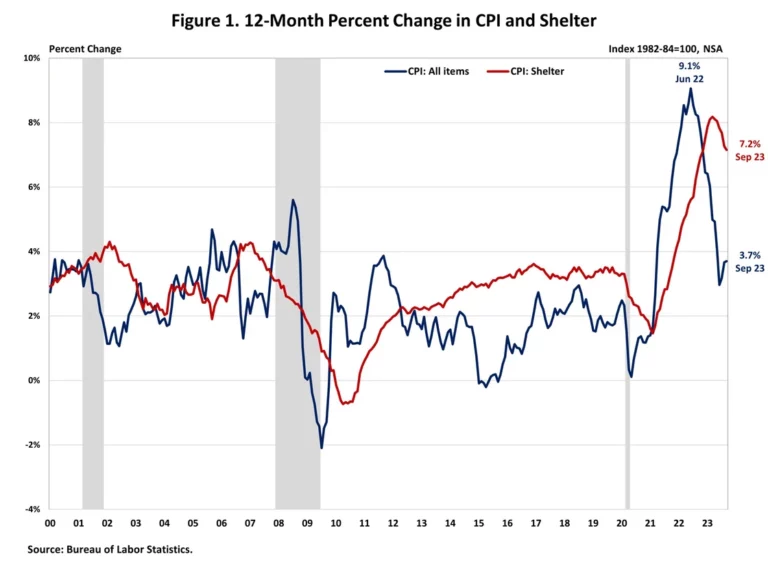
Whether you are an employer, an investor, a homebuyer, or a seller in markets like Charlotte, you probably have the sense that something is really off.
Sure, interest rates are at levels we haven’t seen since 2000, and building materials and labor still suffer from post-pandemic hangovers.
And yet, demand for new housing remains strong, rents are at all-time highs, and existing home sales are spawning bidding wars before they even hit the market.
Inflation, the core problem the Fed’s interest rate hikes are supposed to attack, has been tamed…somewhat. But the one area that has proven especially difficult to tie down? Housing.
47%. That is how much house prices have risen since 2019, according to Case Shiller.
Indeed, “Shelter inflation,” while moving in the same direction as core inflation, has remained at a significantly higher level since the feds started raising rates.

The magnitude of the problem caught the attention of Tom Barkin, President of the Federal Reserve Bank of Richmond. He recently gave a talk that nailed the essence of the problem:
“We need to make the math work better, both for homeownership and renting. But how? Well, subsidizing current prices at a wide scale will only increase demand further, worsening the imbalance with supply. Suppressing demand isn’t an attractive option either. So, that leaves us with the need to increase housing supply.”
That’s right, Charlotte, we have a supply problem.
The root of the problem? NIMBYs – the “Not In My Backyard” pushback against new housing development.
It’s a big problem because I am a NIMBY, and so are you. We all are. It’s just human nature. And when NIMBYs don’t get their way, they are like a child playing Monopoly—every time someone tries to build a house, they just flip the board over.
So, how do we fix this? President Barkin suggested a 3-point strategy to help communities create more supply:
- Compete for developers: Builders and developers have options, and communities can attract the best by simplifying the permitting process around approved development ordinances.
- Innovate in offering affordable land and lowering development costs: Many communities invest in ready-to-use industrial sites; a similar approach could work for residential development (ask Sanford, NC).
- Engage with nontraditional partners: From churches to colleges to large employers, there are more than just homebuilders and homebuyers who have a stake in meeting this challenge. We can cast a wide net to find funding, land, and support.
Great ideas. But will they be enough to turn us NIMBYs into “YIMBYs?”
Our experience in tough negotiations tells us that President Barkin’s approach is a tall order. None of us want to give up control of our own backyard. And when change comes fast and furious, as it has since the pandemic, few of us can honestly say we embrace it without reservation.
While Tom’s strategy is a good starting point for engaging the community and getting creative, to really move the needle on supply, we’re going to have to convert NIMBYs not into YIMBYs, but into MIMBYs (MAYBE In My Backyard).
Because that’s what effective win-win negotiations are all about: Getting naysayers to consider alternatives, engaging in collective problem-solving, and creating deals that deliver value to all parties.
We have a tool that does exactly that. It’s called the Prepared to Win-WinNegotiation WorksheetTM. We are actively putting it to work in land development for new housing projects across the Southeast, and it’s working. In fact, we currently have over 2,000 lots going through the entitlement process.
We are excited to share it with President Barkin and anyone else trying to fix the housing supply and affordability problem.
And if this tool can help us solve a problem this big, just think of what it could do for your next deal. Give us a call and we’ll show you how it works!






